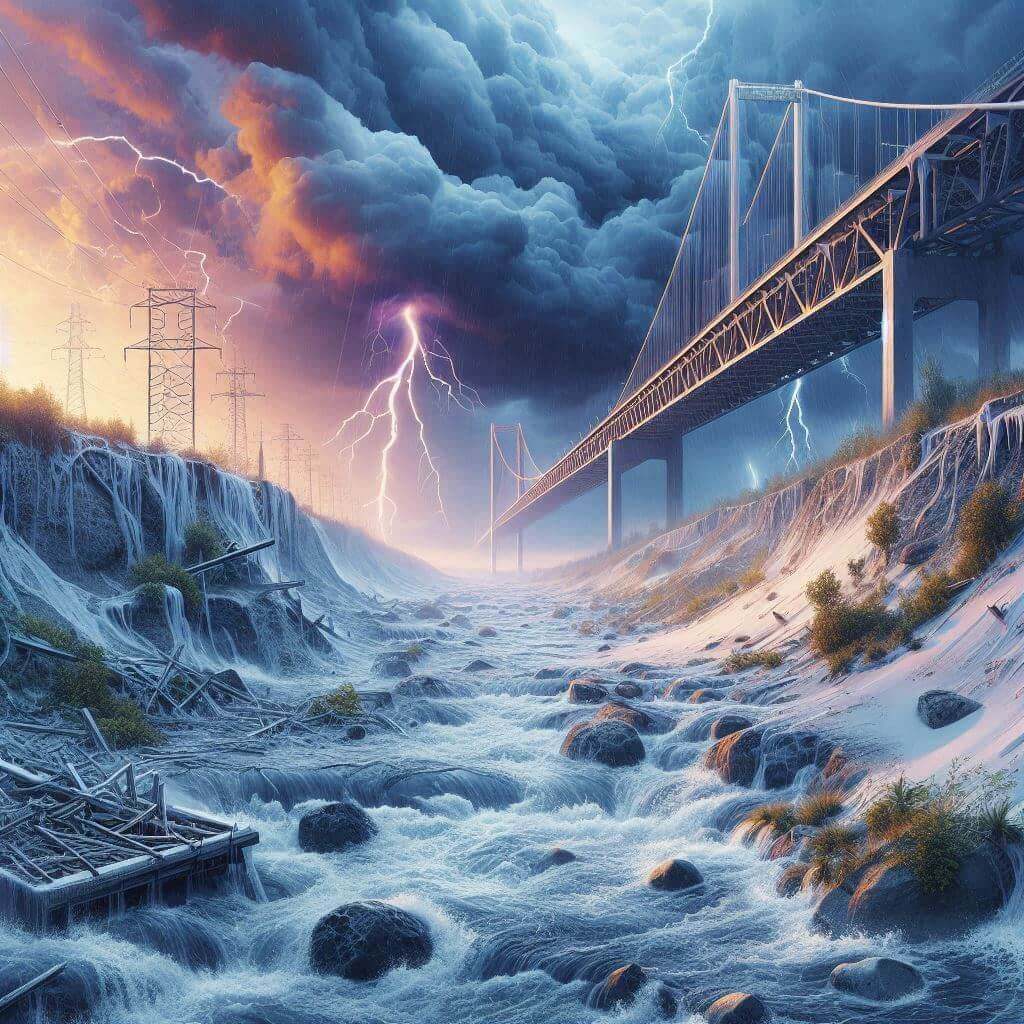As the planet grapples with the pervasive effects of climate change, a myriad of sectors faces unprecedented challenges. One such sector, crucial for the connectivity and functionality of societies across the globe, is civil engineering—more specifically, bridge infrastructure. Bridges, the vital conduits of transportation, commerce, and communication, are increasingly coming under threat from the myriad manifestations of climate change. This article delves into the many dimensions of that impact, exploring the various stressors facing bridge structures, the implications of these changes, and potential strategies for mitigation and resilience.
Understanding the Risks
1. Extreme Weather Events
Climate change is driving an increase in the frequency and severity of extreme weather events. Floods, hurricanes, and heavy storm surges can lead to significant damage to bridges. Floodwaters can erode foundations and even wash away supporting structures, leading to catastrophic failures. As precipitation patterns shift globally, regions that were once considered safe from flooding may face new vulnerabilities.
Hurricanes and severe storms can also subject bridges to intense wind loads. For instance, several bridges along the Gulf Coast in the United States faced stress during hurricanes like Katrina and Harvey, highlighting vulnerabilities in design standards that were based on historical weather patterns and not on projected climate scenarios.
2. Rising Sea Levels
Many vital bridges are located near coastlines or riverbanks. As global temperatures rise, polar ice caps melt, and thermal expansion of water occurs, sea levels are projected to rise, posing a direct threat to these infrastructures. Elevated levels can result in chronic flooding, undermining bridge supports and necessitating costly repairs.
Areas that are already saturated with moisture may also face land subsidence as a side effect of rising sea levels. As the earth settles, the bridges constructed on these regions may face additional stressors, leading to the potential for structural failures.
3. Temperature Extremes
Increased temperatures pose a silent yet potent threat to bridge infrastructure. Heat can cause materials to expand, which may lead to misalignment of structural elements and stresses that exceed design tolerances. Conversely, during colder seasons, fluctuations between hot and cold can lead to the cracking of materials such as concrete and steel.
Moreover, increased temperatures can affect the integrity of expansion joints and other movable parts of bridges. The thermal expansion of materials can lead to premature wear and tear, requiring more frequent inspections and maintenance.
Evaluating Existing Infrastructure
Assessment and Inspection Challenges
The challenges posed by climate change necessitate proactive measures for assessing existing bridge infrastructure. Many transportation agencies rely on inspection and maintenance protocols that were designed without accounting for the projected impacts of climate change. As such, there is an urgent need to advance these protocols, integrating climate projections and resilience strategies into existing frameworks.
Regular inspections must evolve to assess potential vulnerabilities brought about by changing environmental conditions. Bridges may need to undergo more rigorous analyses, perhaps implementing technologies like drones or smart sensors to detect minute structural changes that could lead to larger failures.
Prioritizing Designs for Resilience
Increasingly, bridge designers and engineers are called to prioritize resilience in their projects. This encompasses selecting materials and innovative designs that adapt to changing climatic threats. For example, bridges can be built with elevated approaches to limit flood exposure, reinforced with materials resistant to corrosion due to saline water exposure, or designed to sustain higher stress loads from wind and seismic events.
Investments in research and development towards alternative materials and designs can lead to structures that would better withstand the rigors brought on by a changing climate. Implementing a lifecycle approach in planning and construction—considering the potential impacts of climate change throughout the entire life of the bridge—can lead to more durable structures.
Policy and Funding Implications
Regulatory Frameworks
To address the implications of climate change on bridge infrastructure, it’s essential for policymakers to develop robust regulatory frameworks. Such frameworks should require comprehensive risk assessments that incorporate climate vulnerabilities into the planning and design of new and existing bridges.
Furthermore, guidelines must be updated frequently to align with the latest climate research and engineering innovations. Collaboration between states, regional authorities, and federal agencies is paramount to craft a cohesive strategy that incorporates climate resilience into transportation infrastructure planning.
Funding for Adaptation
The implementation of necessary strategies for climate adaptation often requires substantial financial investment. Governments should proactively seek funding opportunities that target climate-resilient infrastructure. This includes engaging private-sector stakeholders and exploring public-private partnerships to share the financial burden.
Investments in the retrofitting of existing bridges, as well as the construction of new resilient structures, should be prioritized in budgeting and funding initiatives. Additionally, international collaboration may provide insights and funding opportunities, sharing best practices from different regions around the globe.
The impacts of climate change on bridge infrastructure are multilayered, interconnected, and significant. As weather patterns become more unpredictable, historical data alone can no longer serve as a reliable foundation for risk assessments and design standards. Urgent action is required in terms of both policy and engineering practices.
By investing in research, updating regulatory frameworks, and embracing innovative design and material strategies, communities can mitigate the adverse effects of climate change on their bridge infrastructure. This proactive approach not only serves to protect vital transportation links but also enhances overall community resilience in an era defined by rapid environmental change. The future of our bridges—and the communities they serve—depends upon it.


